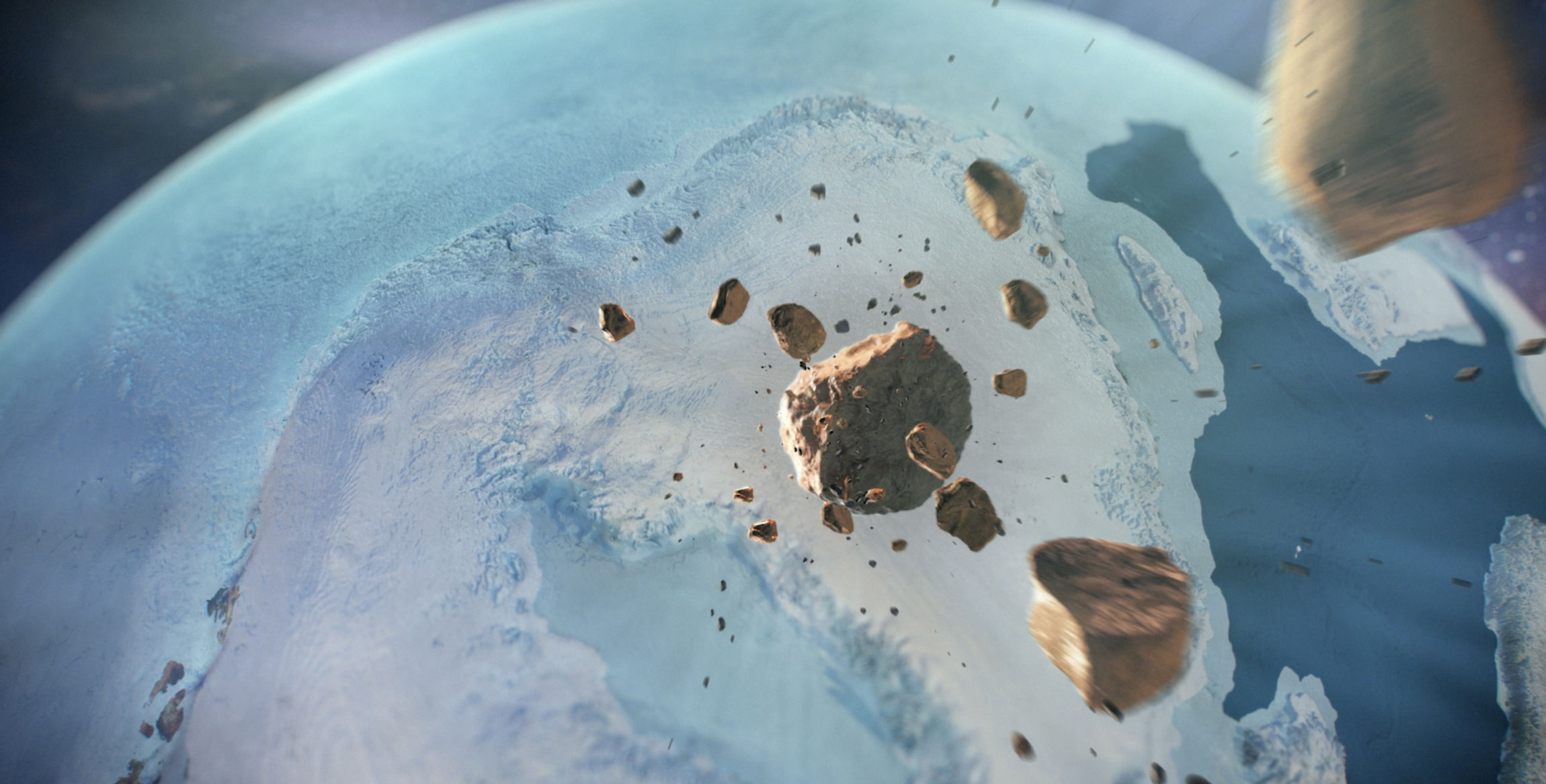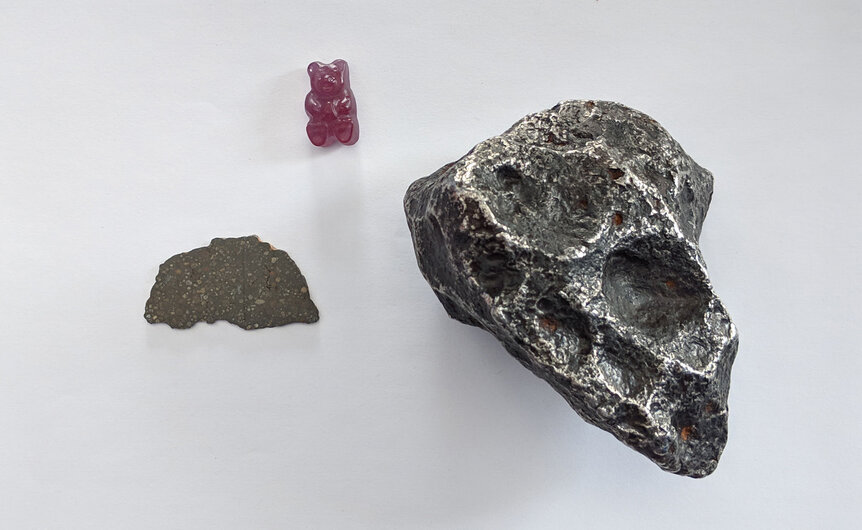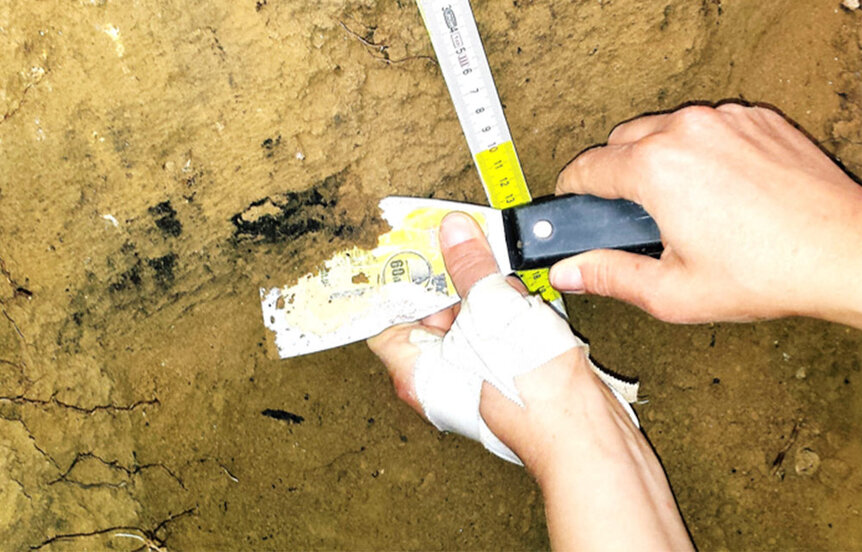Create a free profile to get unlimited access to exclusive videos, sweepstakes, and more!
A new way to find old impact craters: Look at the burned plants
Apocalyptic asteroid impacts burn everything around them, which helps ID them.

This is maybe just a tiny bit morbid but also cool science: A team of geologists and Earth scientists have figured out a new way to identify ancient impact craters: By the way they burned everything around them*.
When a cosmic body like an asteroid or comet hits a planet, the vast energy of its motion is released. Think of it this way: It takes a huge amount of energy to get something moving rapidly, and the bigger/faster it is the more energy it takes. If you stop it, it takes exactly that much energy as well, and if you stop it rapidly — like say, by letting it hit a planet — all that energy is released rapidly.
An asteroid the size of a mountain or even a small hill moving at a dozen or more times as quickly as a bullet has a lot of energy. A lot. It can easily dwarf a nuclear weapon, or even thousands of them for a big enough impact. The Chicxulub impact that did in the dinosaurs had the energy of one hundred million one-megaton nukes. Granted, that impact was near the top end of what we’ve seen, but still. Even a small impact would well and truly suck.
Weirdly, the craters left behind even by monster impacts can be difficult to identify. Sometimes they’re just very old and eroded away. Or they can be underwater, or look like other geological events like volcanoes. IDing them in the geologic record can be iffy.
There are some telltale signs, like shocked quartz; the mineral undergoes such stress in the immense pressure generated that the crystal pattern is altered. But that’s not always easy to find.
Smaller craters are even tougher. Only about a third of craters less than 200 meters across from impacts in the past 12,000 years or so have been identified, and given they can profoundly affect their local and even regional environments, finding them is important.
So any new method that helps is welcome, and that’s what this new research brings [link to paper].
Quite a few confirmed small impact craters have charcoal around them — including, to my own personal interest, Campo del Cielo in Argentina, which occurred a bit less than 5,000 years ago. Campos are popular meteorites on the market, and I have chunk that’s the size of my fist and weighs over 1.2 kilos. Anyway, some of this charcoal is located in the same geological context as the craters and carbon dating indicates similar ages, so the connection seems real.
Still, how can you tell if the charcoal was from an unrelated forest fire, and not ignited by the huge release of energy of an impact burning a forest?
Studies have shown that the way charcoal reflects light depends in part on how hot the flammable material burned. Charcoal from low-energy scrub fires is darker than from high-energy “crown” wildfires, where the flames reach to the tops of trees. That implies that charcoal created from an impact event should have higher reflectivity than from a normal fire.
So the researchers went to four different small impact sites: two of the eight related craters called Kaali in Estonia (caused by the breakup of a single asteroid as it came in), the Morasko crater in Poland, and Whitecourt crater in Canada. All happened in the Holocene, the most recent geologic epoch, the one we’re currently in, and all had charcoal deposits nearby in the ejected material. They measured the reflectances of these charcoals and compared them to those from six different wildfires that had a range of intensities.
Interestingly, the charcoals from all four impact sites were very similar, despite being from impacts widely separated in time and space. The charcoals from fires differed widely in reflectance, even, crucially, in a single fire.
At first that might seem to be a problem, especially if the range of wildfire charcoals overlaps that of the impacts. However, the homogeneity of the impact charcoal winds up being a benefit. If you can collect a bunch of charcoal from a suspected crater, and each piece falls in a narrow range of reflectance, then it’s a decent indicator the candidate is an actual crater. If, instead, the reflectance values vary over the samples, it’s more likely they were formed in a wildfire.
So it’s not the value of the reflectance itself so much as how much it varies in a sample that tells the tale. They posit that twigs and branches that naturally fell from trees before the impact were then buried in warm material ejected from the impact, which then relatively slowly burned them to charcoal, which is why all the samples are so similar to each other.
That’s pretty clever. I’ll note this method will probably only work well for recent impacts, geologically speaking, which have intact charcoal that hasn’t been altered by the ravages of time and erosion. Still, it could help ID dozens of recent craters, some of which could have still-intact effects observable around them.
That would help geologists and planetary scientists understand the effects of hypervelocity impacts better. The physics of how they work is still not terribly well understood. And if these effects can be scaled up, it can help us understand big impacts better too. Those are rare, but can have global effects, so the better we understand these energetic catastrophes, the better off we are.
*I don’t think I’ve ever double-coloned a sentence before, but while Strunk and White might condemn me somehow here it works.




























